Cloquintocet-mexyl
- CAS NO.:99607-70-2
- Empirical Formula: C18H22ClNO3
- Molecular Weight: 335.83
- MDL number: MFCD01632329
- EINECS: 619-447-3
- SAFETY DATA SHEET (SDS)
- Update Date: 2025-02-14 19:37:11
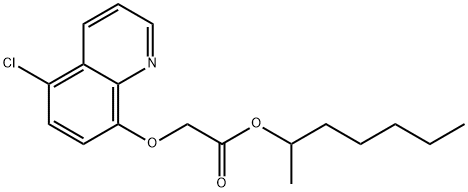
What is Cloquintocet-mexyl?
Description
Cloquintocet-mexyl is a colourless crystalline herbicide safener. It is categorized as Class III toxin.
Chemical properties
beige solid
The Uses of Cloquintocet-mexyl
Cloquintocet-mexyl is a herbicide. It is used to control coarse annual grass of the family poaceae (gramineae). lt was developed by the swiss ciba geigy in the 1980s and the patent has expired.
The Uses of Cloquintocet-mexyl
Cloquintocet-mexyl is used as a herbicide.
Definition
ChEBI: Heptan-2-yl [(5-chloroquinolin-8-yl)oxy]acetate is a member of the class of quinolines that is quinoline which is substituted by a chloro group at position 5 and by a 2-[(heptan-2-yl)oxy]-2-oxoethoxy group at position 8. It is an aromatic ether, an organochlorine compound, a member of quinolines and a carboxylic ester.
Agricultural Uses
Cloquintocet-mexyl is a safener that can be used in conjunction with various herbicides to reduce phytotoxicity to crops. Though effective as a safener, the manufacture, storage, and use of cloquintocet-mexyl containing products can present challenges owing to its sensitivity to water and its low melting temperature (i.e., 61-69° C. for technical material). When products containing cloquintocet-mexyl are prepared, stored, or used in the presence of water, cloquin tocet-mexyl can undergo hydrolysis to form cloquintocet acid, and/or form a needle-shaped, crystalline hydrate that can, lead to clogged spray nozzles during spray applications and/or possibly increased levels of crop phytotoxicity.
Carcinogenicity
In accordance with the EPA Proposed EPA Weight-of-the-Evidence Categories, August 1999, the HIARC classified cloquintocet-mexyl as "not likely to be a human carcinogen." Carcinogenicity studies in rats and mice did not show increased incidence of spontaneous tumor formation. With negative mutagenic test battery, it is suggested that cloquintocet-mexyl (CGA 185072) is not likely to be a human carcinogen.
Metabolism
Metabolism studies in rats indicated that approximately 40% of the administered dose of cloquintocet-mexyl was absorbed through the gastrointestinal tract and subsequently excreted via the urine. Fecal excretion accounted for approximately 60% of the administered dose. The chemical was rapidly eliminated (more than 80% of the administered dose) via feces and urine within 48 hours post-dosing. Sex, dosing regime, and dose levels had little effect on the excretion pattern. Excretion patterns were similar between the biliary cannulated and non-cannulated animals indicating that there was no enterohepatic circulation of the chemical. Three days after administration, tissue radioactivity accounted for less than 0.3% of the administered dose (or was non-detectable) and was not detectable in the expired air. At day three post-dosing, most tissue residues of radioactivity were below the limit of detection. The major metabolic pathway of cloquintocet-mexyl was ester hydrolysis to yield 5-chloro-8-quinolinoxy acetic acid, the major metabolite in the fecal and urinary pools.
Toxicity evaluation
Cloquintocet-mexyl has a low order of acute oral, dermal, and inhalation toxicity. It is slightly irritating to the eyes and non-irritating to the skin. Cloquintocet-mexyl is a skin sensitizer. The chemical is not genotoxic and is not a reproductive and developmental toxicant. There is no evidence of neurotoxicity in the available studies. Cloquintocet-mexyl is classified as “not likely to be a human carcinogen.” The main metabolite for cloquintocet-mexyl is 5-chloro-8-quin-linoxyacetic acid, and testing on the metabolite is part of the toxicology database for cloquintocet-mexyl.
Properties of Cloquintocet-mexyl
| Melting point: | 69° |
| Boiling point: | 448.4±30.0 °C(Predicted) |
| Density | 1.163±0.06 g/cm3(Predicted) |
| vapor pressure | 0-54.4Pa at 25-185.9℃ |
| storage temp. | Sealed in dry,2-8°C |
| solubility | Chloroform (Slightly), DMSO (Slightly), Ethyl Acetate (Slightly) |
| form | neat |
| pka | 1.94±0.29(Predicted) |
| form | Solid |
| color | White to Off-White |
| Merck | 14,2401 |
| Stability: | Stable. Incompatible with strong oxidizing agents. |
| CAS DataBase Reference | 99607-70-2(CAS DataBase Reference) |
| EPA Substance Registry System | Cloquintocet-mexyl (99607-70-2) |
Safety information for Cloquintocet-mexyl
| Signal word | Warning |
| Pictogram(s) |
 Exclamation Mark Irritant GHS07  Environment GHS09 |
| GHS Hazard Statements |
H317:Sensitisation, Skin H410:Hazardous to the aquatic environment, long-term hazard |
| Precautionary Statement Codes |
P261:Avoid breathing dust/fume/gas/mist/vapours/spray. P272:Contaminated work clothing should not be allowed out of the workplace. P273:Avoid release to the environment. P280:Wear protective gloves/protective clothing/eye protection/face protection. P302+P352:IF ON SKIN: wash with plenty of soap and water. P333+P313:IF SKIN irritation or rash occurs: Get medical advice/attention. |
Computed Descriptors for Cloquintocet-mexyl
Cloquintocet-mexyl manufacturer
SPARKVEE FINE CHEMICALS PRIVATE LIMITED
New Products
(R)-1-Boc-3-hydroxypyrrolidine Methyl (R)-1-Boc-4,4-difluoropyrrolidine-2-carboxylate 2,2-Difluoropropylamine hydrochloride tert-butyl 3-bromoazetidine-1-carboxylate DIFLUOROACETIC ANHYDRIDE 2,2-Difluoropropionic acid Diallylamine, 99% Calcium hydroxide, 95% Aluminum oxide, basic 2-Bromophenylacetonitrile, 97% L-tert-Leucine,97% N-Hydroxy-2-methylpropanimidamide 4-(3,4-Dichlorophenyl)-3,4-Dihydro-N-Methyl-1-(2H)-Naphthalenimine (Schiff Base) 2-AMINO-3,5-DIBROMO BENZALDEHYDE [ADBA] L-Glutamic Acid Dimethyl Ester Hcl 10-Methoxy-5H-dibenz[b,f]azepine 5-Cyanophthalide N, N-Carbonyldiimidazole (CDI) Dibenzoyl Peroxide Titanium Dioxide 2-(Methylthio) Benzonitrile Sodium Acetate Anhydrous Allopurinol 1,5-DibromopentaneRelated products of tetrahydrofuran
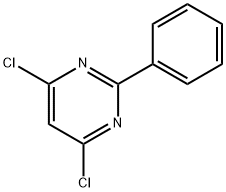
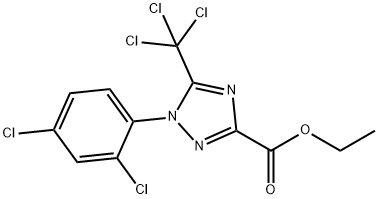

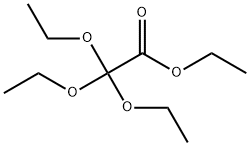

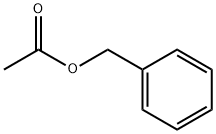


You may like
-
 99607-70-2 98%View Details
99607-70-2 98%View Details
99607-70-2 -
 Cloquintocet-mexyl 99607-70-2 98%View Details
Cloquintocet-mexyl 99607-70-2 98%View Details
99607-70-2 -
 Cloquintocet-mexyl CAS 99607-70-2View Details
Cloquintocet-mexyl CAS 99607-70-2View Details
99607-70-2 -
 99607-70-2 Cloquintocet-mexyl 98%View Details
99607-70-2 Cloquintocet-mexyl 98%View Details
99607-70-2 -
 99607-70-2 98%View Details
99607-70-2 98%View Details
99607-70-2 -
 Cloquintocet-mexyl 99%View Details
Cloquintocet-mexyl 99%View Details
99607-70-2 -
 Cloquintocet-Mexyl 95% (HPLC) CAS 99607-70-2View Details
Cloquintocet-Mexyl 95% (HPLC) CAS 99607-70-2View Details
99607-70-2 -
 Cloquintocet-mexyl CAS 99607-70-2View Details
Cloquintocet-mexyl CAS 99607-70-2View Details
99607-70-2
